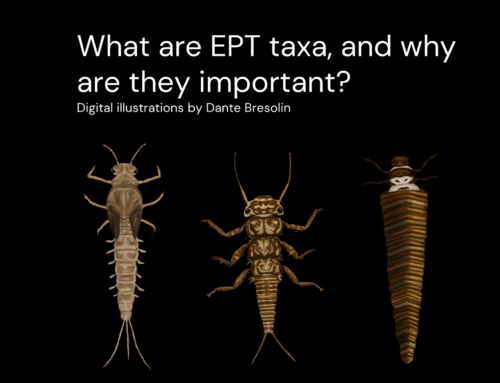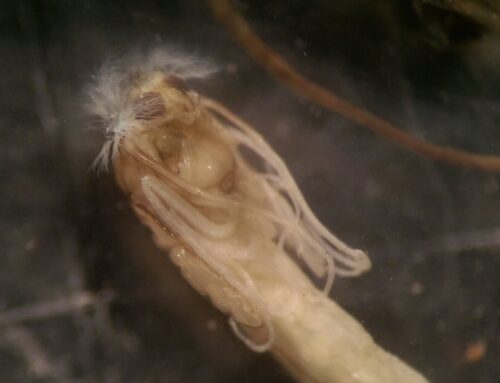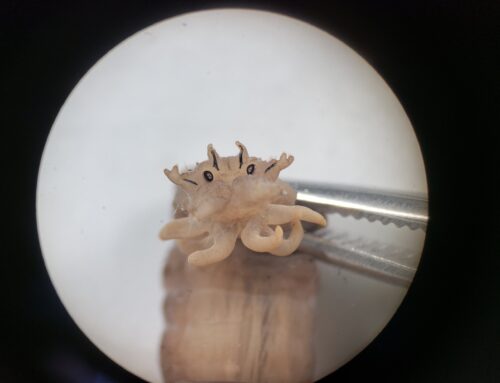How a leaf becomes a bird is an illustrative series by Andrea Bresolin, one of our recently-completed undergraduate thesis students. While streams and forests are often treated as separate ecosystems, this series highlights the importance of forested streams for supporting several species at risk in Ontario, aquatic and terrestrial. In this series, Dante’s gifts are on full display: their macroinvertebrate expertise is paired with a love for birds, and incredible gift of illustrations that show us how these species are interconnected.
Many insects (invertebrates) spend a portion of their life, typically the larval stage, in the aquatic stream environment. Leaf litter is an important source of energy for stream ecosystems, especially for foundational taxa such as aquatic macroinvertebrates. From scrapers to shredders, invertebrates have developed a range of feeding strategies to use leaf litter. The energy they gain fuels the base of the aquatic food webs, with many species relying on invertebrates for their own nutritional needs.
When invertebrates eventually emerge from the waters as winged adults, they are preyed upon by several bird species. Aerial insectivores like chimney swifts and bank swallows feed on flying insects in the air, while warblers like the Louisiana waterthrush and Prothonotary warbler are known to nest and feed along rivers.
The forested streams and wetlands that these birds call home are threatened in Southern Ontario, and their continued destruction is a likely contributor the decline of aerial insectivores. Reflecting on how we can protect these species, and thinking beyond the stream, the story of how a leaf becomes a bird illustrates the critical role of conservation and restoration of freshwater habitats in protecting species at risk across Ontario.












